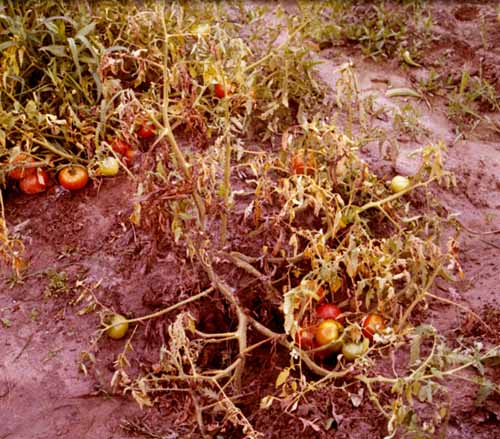Ms. Padma Raut from village Manikwada stands out from other rural women in more ways than one.
A gritty personality with a ‘never say die’ attitude;
Not a person to mull long over spilt milk, she fights back with a vengeance.
The difficulties have to bow down ultimately.
A life which has consistently thrown challenges at her from a very young age- Poverty, lack of education, lack of resources, with mother dying of snake bite, father being swept away and lost in flood waters. She herself was married off as a second wife to a person who already had 2 daughters from the first marriage.
Her spirited fight back led her to try out as many things as possible. Anything which could give some money to tide things over for the next few days.
Educated only upto 1st standard in
school, she worked as agricultural labourer, tried her hand at odd jobs
of tailoring, working as an insurance agent, established a small shop
selling stationery.
She also tried selling bangles, worked even as a barber for small children - a trade operation by a WOMAN unheard and unseen in rural India. She gets Rs.5-10 for each trimmed head, earning an average of Rs.175/- ($3) per month.
All trades with meager capital and most working only as seasonal.
Meanwhile, her husband tried to set her on fire after a drinking bout.
Life stumbled along with impending marriages of daughters, a costly affair in India, a drunkard husband, education, food …. and after some time, even her husband’s death which brought fresh problems in its wake.
At such times, the question is more about survival, than rights.
After a few years her inherent spirit goaded her to tackle things squarely.
The support from GlobalGiving came along. On advice from other committee members, she sought access to a higher credit.
A loan amount of Rs.10,000 ($168) allowed her to start a small trade of spices especially red chillies, an important ingredient in Indian cooking. She bought the chillies at wholesale prices, when the prices were low in the market. She converted half into powder and sold this processed spices at retail prices.
Cost price = Rs.18,000 for 300 kg. of chillies.
Processing cost = Rs.1,500 for 150 kg. of chillies.
Selling price= Rs.14,000 for 140 kg of chilly-powder. (10 kg is lost in processing).
(From chillies cost of Rs.9,000 + Processing Rs.1,500 = Total cost Rs.10,500).
150 kg of unprocessed, whole chillies still remain in her home.
She usually keeps the selling price a few notches lower than that commanded in the market. And takes utmost care to maintain the quality of her product. Even if the profit is low, it is the business which comes to her.
She plans to expand the business further.
She has already repaid the loan amount to the federation.
This will go to help another deserted woman in need.
Her husband no more, her sole aim in life is to get a decent education for her son.
With this stability in life, her go-getter personality consistently keeps on trying to help other women with difficult lives, egging them on to step out and improve their condition. Her motto - NEVER GIVE UP !
Friends, please note that your support in terms of time or resources actually gives you and your friends a chance to help women like Padma, providing vehicles which should and will help them catch up with rest of the society.
I request you to promote this link http://www.globalgiving.org/projects/empower-deserted-women-and-widows-in-rural-india/,
Thank you !
Warm Regards from us and Padma !
A gritty personality with a ‘never say die’ attitude;
Not a person to mull long over spilt milk, she fights back with a vengeance.
The difficulties have to bow down ultimately.
A life which has consistently thrown challenges at her from a very young age- Poverty, lack of education, lack of resources, with mother dying of snake bite, father being swept away and lost in flood waters. She herself was married off as a second wife to a person who already had 2 daughters from the first marriage.
Her spirited fight back led her to try out as many things as possible. Anything which could give some money to tide things over for the next few days.
 |
| Ms. Padma Raut |
She also tried selling bangles, worked even as a barber for small children - a trade operation by a WOMAN unheard and unseen in rural India. She gets Rs.5-10 for each trimmed head, earning an average of Rs.175/- ($3) per month.
All trades with meager capital and most working only as seasonal.
Meanwhile, her husband tried to set her on fire after a drinking bout.
Life stumbled along with impending marriages of daughters, a costly affair in India, a drunkard husband, education, food …. and after some time, even her husband’s death which brought fresh problems in its wake.
At such times, the question is more about survival, than rights.
 |
| Woman barber - a revolutionary scene in an Indian village |
After a few years her inherent spirit goaded her to tackle things squarely.
The support from GlobalGiving came along. On advice from other committee members, she sought access to a higher credit.
A loan amount of Rs.10,000 ($168) allowed her to start a small trade of spices especially red chillies, an important ingredient in Indian cooking. She bought the chillies at wholesale prices, when the prices were low in the market. She converted half into powder and sold this processed spices at retail prices.
Cost price = Rs.18,000 for 300 kg. of chillies.
Processing cost = Rs.1,500 for 150 kg. of chillies.
Selling price= Rs.14,000 for 140 kg of chilly-powder. (10 kg is lost in processing).
(From chillies cost of Rs.9,000 + Processing Rs.1,500 = Total cost Rs.10,500).
150 kg of unprocessed, whole chillies still remain in her home.
She usually keeps the selling price a few notches lower than that commanded in the market. And takes utmost care to maintain the quality of her product. Even if the profit is low, it is the business which comes to her.
 |
| Padma selling chilli powder to a local customer |
She has already repaid the loan amount to the federation.
This will go to help another deserted woman in need.
Her husband no more, her sole aim in life is to get a decent education for her son.
With this stability in life, her go-getter personality consistently keeps on trying to help other women with difficult lives, egging them on to step out and improve their condition. Her motto - NEVER GIVE UP !
 |
| Padma with her friend |
Friends, please note that your support in terms of time or resources actually gives you and your friends a chance to help women like Padma, providing vehicles which should and will help them catch up with rest of the society.
I request you to promote this link http://www.globalgiving.org/projects/empower-deserted-women-and-widows-in-rural-india/,
Thank you !
Warm Regards from us and Padma !


